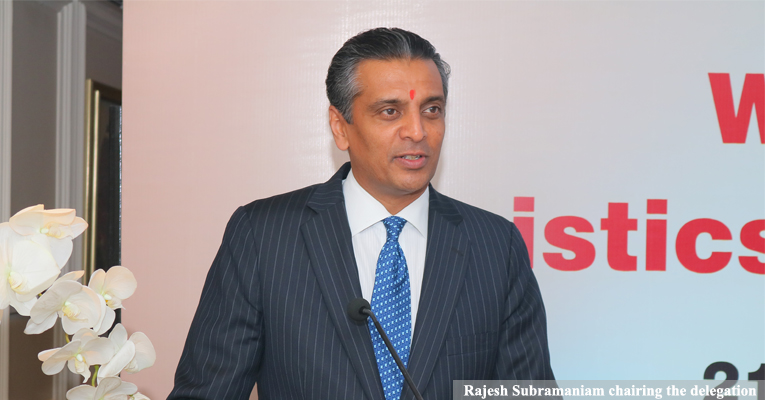US-India Business Council’s Logistics Industry Mission deliberates on strengthening Indian logistics

Sept 28, 2016: The US-India Business Council (USIBC) concluded its inaugural Logistics Industry Mission in New Delhi recently. The discussions focused on the implications of the passage of GST, WTO Trade Facilitation Agreement, and strengthening transport infrastructure to facilitate the growth of India’s logistics industry. The delegation, led by Rajesh Subramaniam, executive vice president, marketing and communications, FedEx, comprised representatives from FedEx Express, DHL Express, Boeing, Brambles/CHEP, TransAsia, and other US-based companies.
The delegation expressed its commitment to work with the Govt. of India to create a stronger ecosystem to incentivise investment and ensure the smooth functioning of India’s promising logistics industry along with exploiting the benefits of an impending ecommerce boom. The delegation discussed three important ways by which the American logistics industry could work with the Govt. of India to support the country’s aspirations of integrating with the global supply chains, and boost trade and economic growth.
The delegation’s meetings with the Govt. of India included Ministry of Finance’s Central Board of Excise & Customs Chairman Najib Shah, Ministry of Civil Aviation, Ministry of External Affairs, Ministry of Road Transport & Highways, and the Ministry of Commerce’s DIPP. The delegation expressed their commitment to stronger US-India economic ties in logistics with US Ambassador to India Richard Verma, and shared specific policy recommendations with the Minister for Civil Aviation, Ashok Gajapathi Raju, to facilitate the efficient functioning of express service operators in India.
The GST is a game-changer for India’s logistics industry. However, the group advocated for a truly restriction-free flow of goods at interstate borders by ensuring efficient communication between the customs and GST authorities, as well as ease of doing business with regard to Know Your Customer requirements and de minimis rules. To support the impending e-commerce boom – and in turn to augment the ‘just in time’ manufacturing model – the delegation stressed on the early implementation of the WTO Trade Facilitation Act. The delegation applauded the Govt. of India’s rollout of the Single Window Interface but also requested a similar model to support the express services industry using the courier mode.
“In logistics, India is heading towards a win-win situation for itself and its trading partners. On this USIBC mission, we met with key officials in the Govt. of India. The goal was to identify ways the American logistics industry could work with the Govt. to support the country’s aspirations of integrating with global supply chains, becoming an international logistics hub, and boosting overall jobs and economic growth. The potential of the Indian economy is immense, but to reach that potential India must continue to reform its logistics sector and find ways to reduce logistics costs. Further GST reforms, trade facilitation and infrastructure investments are keys to delivering a more competitive and inclusive economy for India,” said Subramaniam.
The mission’s Knowledge Partner, Knight Frank India, also unveiled its “India Warehousing Market Report 2016” at the event. The report provides warehousing sector dynamics in India’s top seven cities. Dr Samantak Das, chief economist and national director, Knight Frank India, noted, “The current environment is likely to accelerate progress in the logistics sector in India, considering the interest from Govt. as well as private enterprises. The GST will amalgamate several central and state taxes into a single tax to facilitate a unified national market. Further, inter-state industrial corridors, such as the ambitious Delhi Mumbai Industrial Corridor (DMIC), and freight corridors, such as the Western and Eastern Dedicated Freight Corridors, are gaining renewed focus. Our first report in the series — India Logistics & Warehousing Report 2014 — was a detailed handbook introducing warehousing sector dynamics, such as demand drivers, policies and regulations, business models, and enabling infrastructure and emerging trends, among others. We see a great potential in the overall logistics sector, with warehousing being a key element in it.”




